Learn everything you need to know about flat feet and flat feet surgery in this article by foot expert Dr. Florian Wenzel-Schwarz, from Vienna. He talks about how to recognize flat feet, how to prevent flat feet surgery, and most importantly, why many patients can be greatly helped by flat feet surgery to get their symptoms back under control. Before flat feet surgery, always find out about possible surgical methods and whether bone screws (screws made from human bone), such as the Shark Screw®, can be used in your surgery to avoid possible further surgery to remove metal, as with screws and plates made from metal.
Reading time: 6 min
What are the reasons for flat feet surgery?
“For a flat feet surgery often offers the chance of long-term pain relief. Screws made from human bone in particular have proven their worth here, as they do not have to be removed during a possible second operation like metal screws and plates.” The expert explains, Dr. Florian Wenzel-Schwarz, which is in Vienna and Neusiedl am See as a podiatrist and orthopedist is active.
“Many patients try to manage the symptoms of flatfoot in the first step without surgery, that is, conservatively. Here, above all, targeted physiotherapy plays an important role. Furthermore, orthopedic insoles or orthopedic shoes can help. However, if there is no pain relief or if it is only short-lived and the foot malposition is too advanced, in most cases only surgery will help to relieve the pain in the long term,” the expert continues. Many experts therefore advise flatfeet surgery for advanced flat feet symptoms, as this can relieve the symptoms, in most cases, in the long term.
“Before your flat feet surgery, clarify what materials will be placed in your foot and what techniques your doctor practices. As a result, many clinics are trained to work with Shark Screw® and are familiar with common flat feet surgical techniques. But not every clinic is trained to provide Shark Screw®. In addition to these Shark Screw® experts and centers, there are also clinics that insert metal screws and metal plates into the bone for flat feet surgery,” said Thomas Pastl, CEO of surgebright.
Are you looking for a flat feet expert who can provide you with Shark Screw®, saving you from a possible second metal removal surgery? Feel free to ask. An experienced Shark Screw® expert in your area will be quickly recommended.
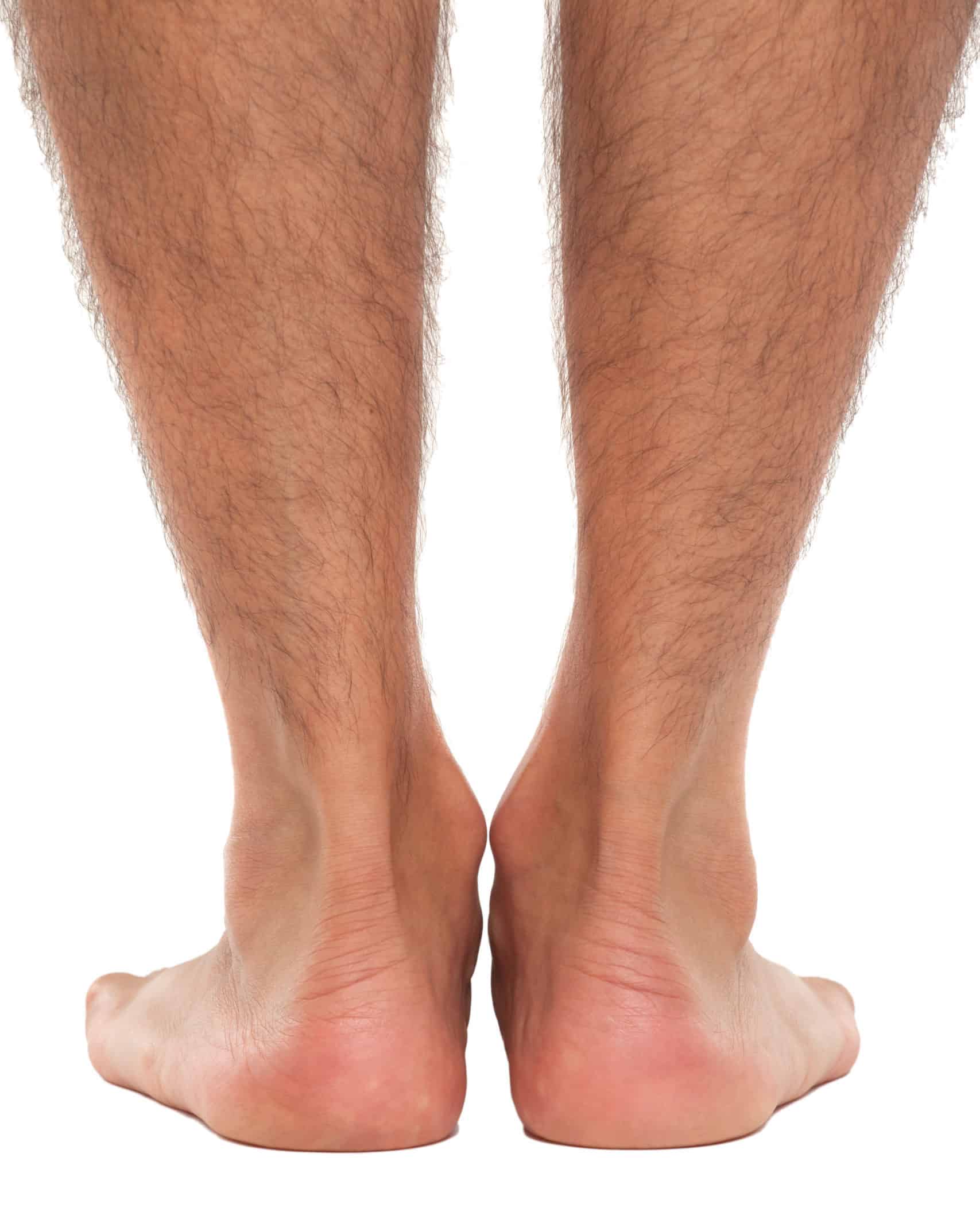
What are flat feet?
Flat feet are a foot deformity that can be either congenital or acquired. The foot is said to be flat-footed if the entire sole of the foot lies flat on the ground. The reason for this is the lack of natural arching of the foot and the consequently sinking, inner foot edge. In more extreme cases, the Achilles tendon may also be shortened or the tibialis posterior/ FDL tendon may be non-functional / torn. Special forms of flat feet include buckling flat feet, or drop feet. If you want to clarify whether you have flat feet, we always advise you to talk to a specialist such as Dr. Florian Wenzel-Schwarz, an foot orthopedist from Vienna.
How can flat feet be treated?
“The most appropriate therapy depends on the extent of the deformity. Basically, however, there are two ways to treat flat feet: The conservative flat feet therapies and the surgery of flat feet. Mild deformities can be treated well with conservative therapies. These include special orthopedic shoe inserts or custom orthopedic shoes that restore the shape of the foot. Targeted physiotherapy and specific gymnastic exercises are also essential. In case of involvement or inflammation of the tibialis posterior tendon, anti-inflammatory drugs and plaster immobilization can be resorted to. Depending on the stage of the flatfoot or the discomfort it causes, it makes sense to treat it with surgery in advanced stages.” Says Dr. Florian Wenzel-Schwarz, who relies on Shark Screw® for the treatment of his patients.
Flat Feet Surgery Experiences
Experience reports about flat feet surgery are often hard to find on the internet. To get real experience reports, it often helps to exchange with other sufferers in a forum. In such a flat feett forum, for example, affected people talk about their experiences and how they managed to get their flat feet problems under control. Why young athlete Roman Peherstorfer decided to have surgery for his flat feet, he tells in this video.
Does surgery really help with flatfeet? Or are conservative treatments more appropriate. Roman Peherstorfer talks about his experience with flatfoot surgery.
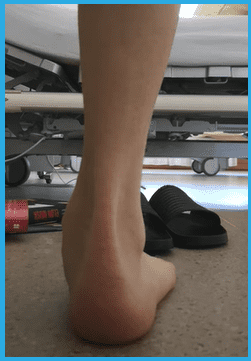
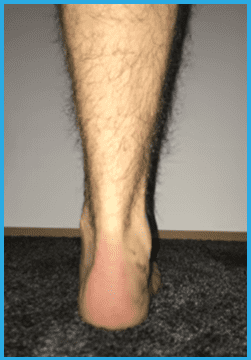
Left/Top: Illustration of flat feet before surgery.
Right/bottom: Image of flat feet after surgery with Shark Screw®.
6 facts to know about flat feet surgery!
When should you have flat feet surgery?
“Especially in patients with a very pronounced flatfoot, in whom no success can or could be achieved with conservative therapy attempts, I recommend surgery. If the cause of the flatfoot is an underlying disease, e.g. of neurological or rheumatic origin, this must also be clarified and treated. Instability of the foot and osteoarthritis or damage to the tibialis posterior tendon are also common triggers for pain and increasing deformity. Often, pain triggered by this can only be alleviated by flatfoot surgery and symptoms of flatfoot can be permanently eliminated.” Thus the foot expert with ordinations in Vienna and in Neusiedl am See.
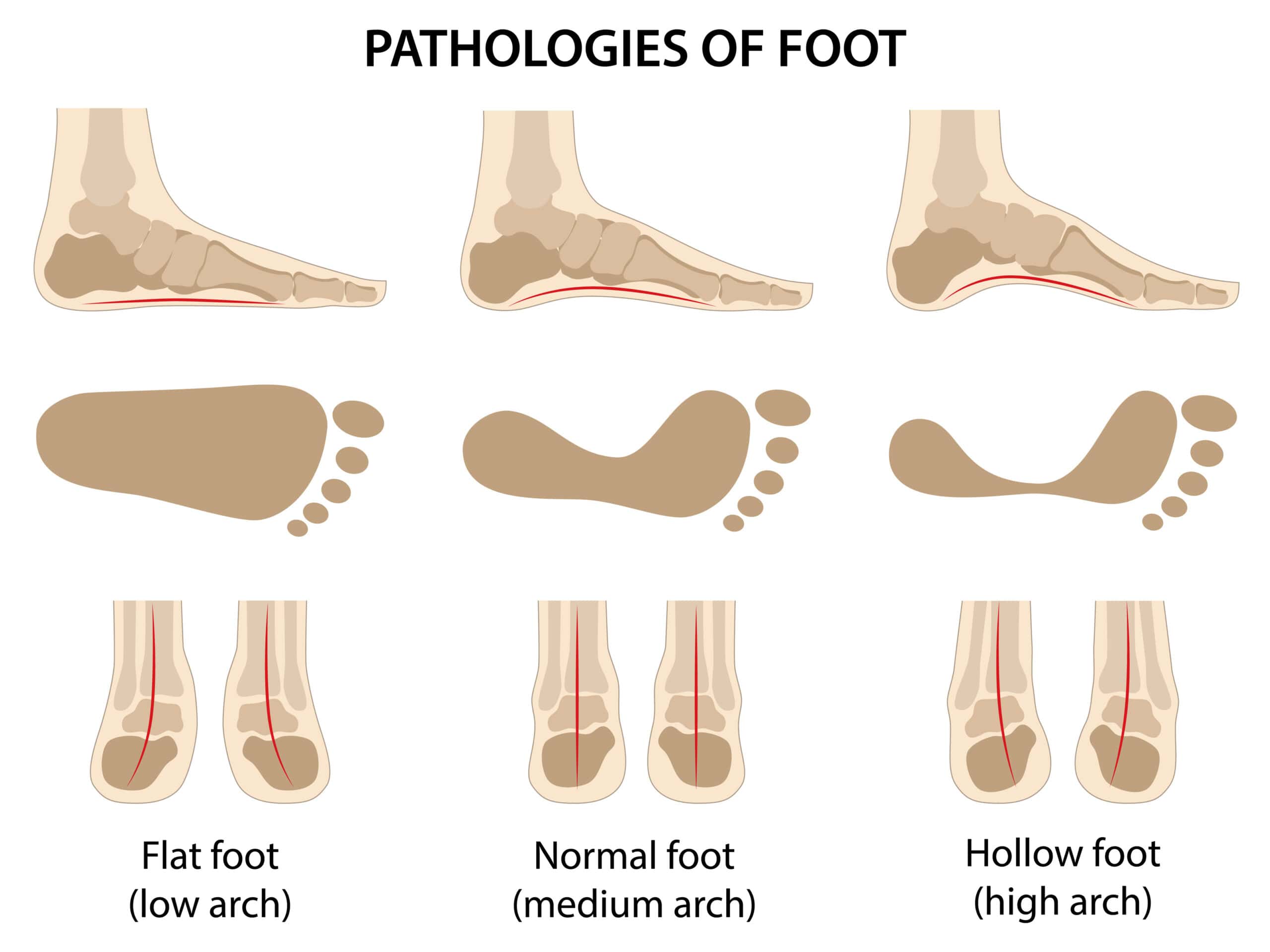
The 3 stages of flat feet according to Klass:
Stage 1:
Flatfoot can be treated with conservative therapies. In this case, it is corrected with the help of wearing special orthopedic insoles. The Achilles tendon may already be slightly shortened at this point. The lowering can still be corrected occasionally by wearing custom-made insoles. The rear part of the foot can already point outward. Talk to your doctor.
Stage 2:
There is a shortening of the Achilles tendon. In addition, the rear part of the foot shifts additionally there is an abduction of the front foot. Conservative therapies such as orthopedic insoles in combination with special shoes are usually futile. Many patients opt for surgery at this stage.
Stage 3:
The heel stands tall and the anklebone head protrudes from the inner edge of the foot. The forefoot is also permanently splayed. Conservative therapies do not improve the foot deformity at this stage. Check with your doctor about each surgical option and whether screws made from human bone would be considered to prevent a second surgery.
What are the surgical methods for flat feet?
OP-Methode | Vorgehen |
Calcaneus Osteotomie / Fersenbein Osteotomie | Verschiebung des Fersenbeines, Fixierung durch Schrauben |
Operation der Tibialis-posterior-Sehne | Transfer einer Sehne |
Gelenkversteifung | Versteifung mit Schrauben |
Calcaneus-Stopp-Schrauben - Arthrorise / (bei Kindern) | Schraube wird in das Fersenbein gebracht - verhindert somit das Abknicken des Fußes |
Evans-Osteotomie | Verlängerung des Fußaußenrandes |
Cotton-Osteotomie | Anheben des Fußgewölbes |
Calcaneus osteotomy / calcaneal osteotomy
In the calcaneus osteotomy, the calcaneus is osteotomized i.e. cut and moved inwards or outwards by about 1cm. The displacement of the calcaneus is fixed by screws. Calcaneus osteotomy is sometimes the most commonly practiced surgical technique for the correction of flexible flatfoot deformity without advanced osteoarthritis. Screws from bone (bone screws) no longer need to be removed. On the other hand, the use of metal screws and plates may result in metal removal, as the surrounding tissue (Achilles tendon, skin, etc.) may be irritated by the foreign material.
Tibialis posterior tendon surgery
Transplantation of a healthy tendon in the case of a severely degenerated tendon or removal of the inflamed connective tissue around the tendon while preserving function.
Joint stiffening
under correction of the hindfoot, this usually involves the lower ankle joint and is stiffened with screws.
Calcaneus stop screws – Arthrorise / (for children)
In this procedure, a small skin incision about 0.5 to 1cm long is made directly on the outside in the area of the outer ankle on the foot. A screw is then inserted into the calcaneus at this point. The inserted screw is thus intended to prevent the foot from bending inwards. Growth causes the foot skeleton to still be able to adapt accordingly. Disadvantage of this surgical technique: In the vast majority of cases, the screw is removed again after about 3 years, at the latest when growth is complete. Advantage: Fast and in experienced hands simple operation with low risks.
Evans osteotomy
In this case, the bone (the calcaneus) at the outer edge of the foot is lengthened (with or without arthrodesis of the joint between the calcaneus and the cuboid bone). An osteotomy is performed between the anterior middle facet of the joint.
Cotton osteotomy
The 1st beam is lowered, which raises the arch of the foot.
What surgical materials can be used in flat feet surgery?
Material | Vorteile | Risiken |
Shark Screw® / Schraube aus menschlichen Knochen | Integration in Knochenumbauprozess | Keine Metallentfernung | Keine Wetterfühligkeit bekannt | Geringe Schmerzen nach der Operation | Hohe Festigkeit | 1-4 Wochen nach der Operation besondere Vorsicht bei der Belastung des Fußes |
Schrauben aus Metall / Metalllegierungen | Hohe Festigkeit | Metall im Körper | Einsatz bei Allergikern & Wetterfühligkeit vermeiden |
Plattensysteme | Hohe Stabilität und Festigkeit | Kann Gewebeirritationen hervorrufen | Einsatz bei Allergikern & Wetterfühligkeit vermeiden |
Can Shark Screw® help with flat feet?
Yes it can. Many surgeons rely on Shark Screw® for flat foot surgery. The advantage of Shark Screw® is that it is integrated into the natural bone remodeling process. Shark Screw® is colonized by the body’s own cells after implantation. This is made possible by the so-called Havers channels, which are located inside the screw. Bone cells and endogenous vessels can therefore settle in the structure of these channels. This process allows new bone structures to develop, which thus adapt to the requirements of the respective foot and eventually become the body’s own bone. This saves patients who are operated on with a Shark Screw® a second operation, which often has to be performed with conventional metal screws in order to remove them again. However, unless they are removed by a second operation, metals remain in the bone as foreign bodies without function. However, if this second operation is cancelled due to the Shark Screw®, this means an enormous alleviation of the associated risks for the patient and, of course, a shortened period of sick leave.
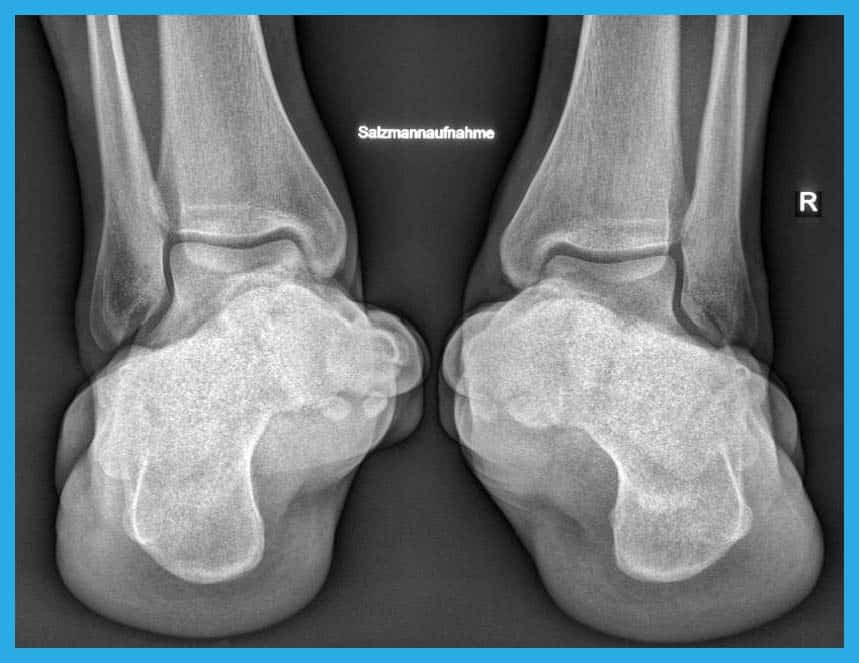
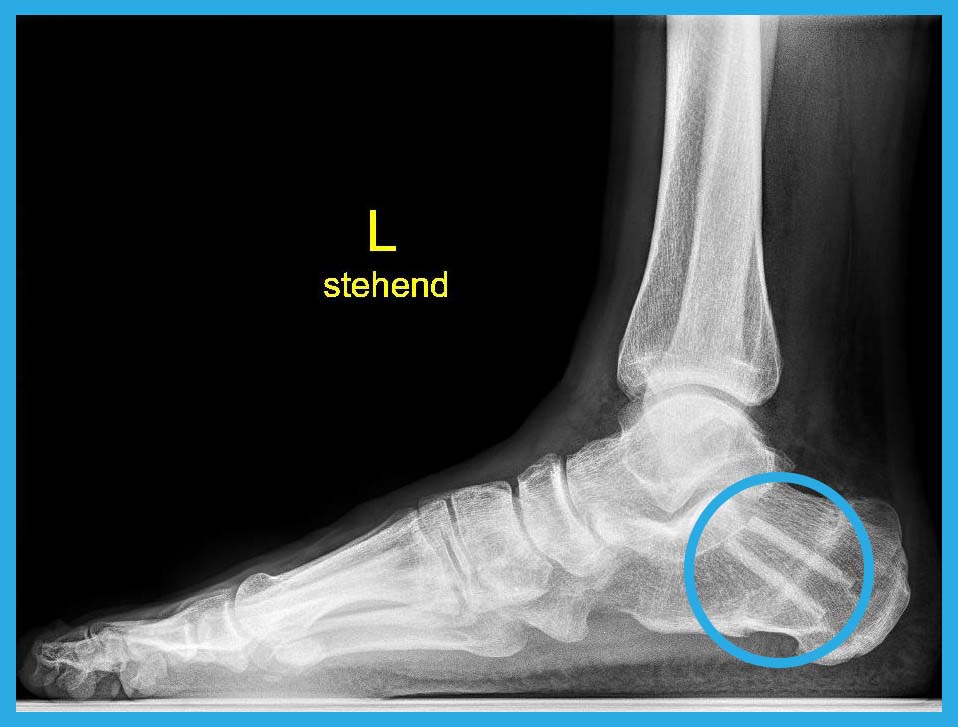
The left/upper image shows auntreated flat feet before surgery. The right/bottom picture shows flat feet treated with Shark Screw® after surgery.


